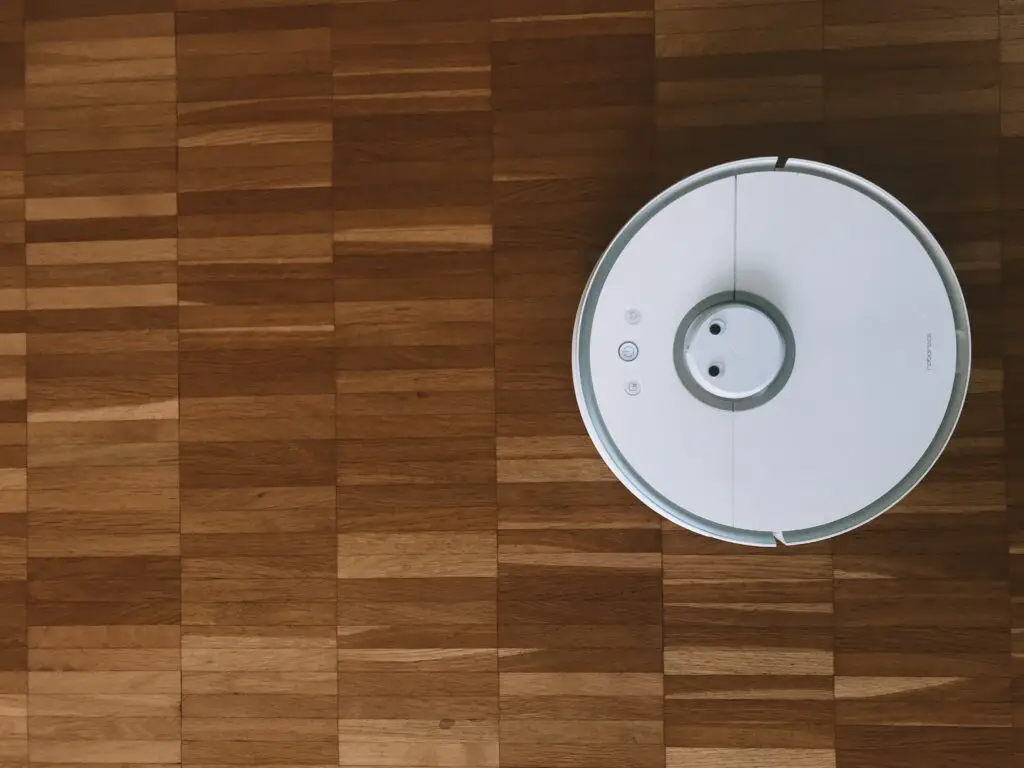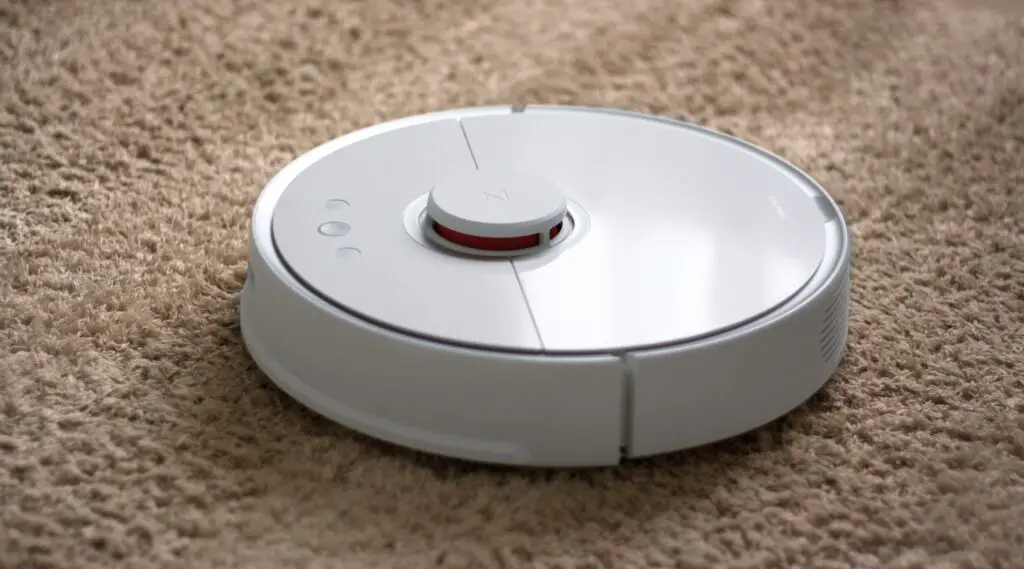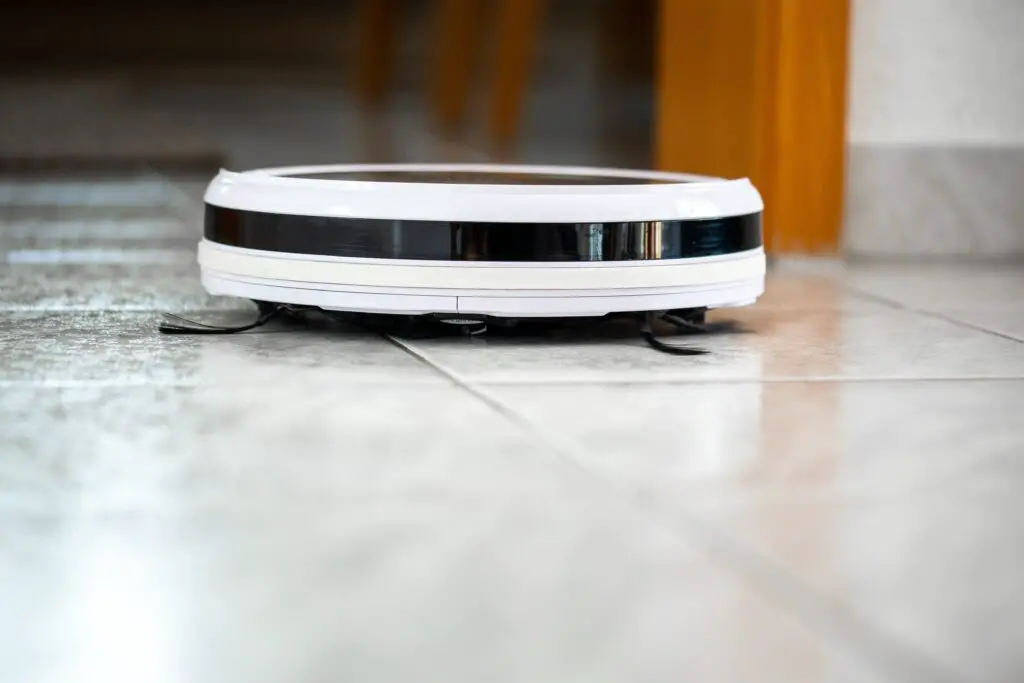As an Amazon Associate we earn from qualifying purchases.
Roomba is a robot vacuum consisting of two side wheels and one caster wheel. This machine makes your life easy with its automatic functionality. For example, you get the floors clean within just a few seconds.
With its help, your carpets are tidy after the guests walk out of your home. However, like any other machine, this also requires proper cleaning and maintenance for operating effectively.
Contents
How to Clean Roomba Side Wheels?
Even though proper cleaning of the brushes, IR sensors, and charging ports of Roomba is quite applauding, missing out on wheels is not. If you take a closer look, you can notice the amount of hair, dirt & dust trapped around the wheel axle. Unfortunately, people mostly ignore the Roomba wheels, which might result in robust build-ups.
Moreover, the dust clumps get stuck inside the side wheel compartments. This, in turn, leads to less efficient performance.
Therefore, you need to learn how to clean Roomba side wheels and give the necessary attention to this particular part of your little robot cleaner. With this, you may be able to clean area rugs on hardwood floor in no time. Follow this guide to know the correct methods.

Method 1: Cleaning With Baby Wipes
The caster wheel of the Roomba vacuum is easy to detach for efficient cleaning. However, it is not the same for the side wheels. In this cleaning method, you do not even need to try removing them.
Still, you will be able to clean out dirt, dust, and hair remnants effectively. Just follow these steps:
Step 1: Stuffing the Baby Wipe Into the Wheel Compartment
- Use one baby wipe for each of the side wheels.
- Start stuffing one edge of baby wipe into the side wheel well.
- Prefer not to shove the baby wipe too deep.
- Turn the wheel with your hands.
- Now, you will notice baby wipe being pulled through all on its own with the movement of the wheel.
Step 2: Cleaning Process Begins
- Turn the wheel further to let the baby wipe do its cleaning from within.
- Continue the turning motion for two or three complete cycles.
- Check for the dirt, dust, and hair remnants clearing out from the wheel well.
Step 3: Pulling Out the Baby Wipe
- When you are done with cleaning, slowly pull out the baby wipe by turning the wheel in the opposite direction.
- Do not pull it out forcefully, as it might damage the wheel.
- Repeat the same process for the other wheel, and you will have the side wheels of your Roomba cleaned.
See this video to learn about how to implement these steps to clean your Roomba’s side wheels.
Method 2: With Up & Down Pushing
In the same way that RC cars and clear stamps can be easily cleaned and with baby wipes, they are also somehow effective in cleaning out most dirt and debris from the side wheels of a Roomba. However, Roomba also has this built-in technique to shake away any robust residues stuck to the side wheels. And, here are the steps to execute this technique:

- First, turn the Roomba around and get its backside up.
- Push down one of the two side wheels of Roomba.
- Push the wheel down until it touches the chassis.
- Let it spring back from that position, back to normal.
- Continue the process several times to release the stuck dirt, dust, and debris within the compartment.
- When you have pushed and released the wheel for a satisfactory amount of time, flip it back again.
- Shake it a little to see the loose residues fall off.
- Now, flip the Roomba to press the wheel and take a peek for any other residues.
- When satisfied, move onto the next wheel and repeat the process.
Tip!
If you are facing any kind of trouble in removing the junk lumps after shaking the wheel, you can use compressed air for the purpose. You can get respective cans over online or offline stores.
Method 3: By Removing Wheels & Other Installations
By removing the wheels and other installations, you can get a clear reach to the wheelbase for proper cleaning. Here’s what you need to do:
- Turn the Roomba vacuum upside down.
- Use a screwdriver to loosen the side brush screw, and remove it.
- Remove the cover on the bottom side by loosening four more screws.
- Loosen more screws attached to the wheel module.
- Remove the module.
- When the wheel module is out, clean all parts of it with a microfiber cloth.
- Dip the microfiber cloth into isopropyl alcohol solution to clean the nooks and corners of the side wheel compartment.
- Repeat the same process for the other side wheel as well.
Frequently Asked Questions
Do These Cleaning Methods Go Well With All Roomba Models?
Yes, methods 1 and 2 are not directly proportional to the models of Roomba. Hence, it means that irrespective of the type or model, you can use these methods for cleaning your robot vacuum.
However, coming to the 3rd method, this varies from model to model as different types have different installation mechanisms.

How to Know if the Side Wheels Need Cleaning?
Most of the Roomba vacuum models put up error messages when they experience obstructions in their functionality. In addition, some of the models have their flashing lights to turn on and indicate hindrances going on inside them.
So, keep an eye on those built-in signals. But, apart from that, even if the Roomba vacuum doesn’t signal an obstruction, you should still clean it once a week to maintain its usefulness.
Conclusion
By simply cleaning the side wheels, you may save time cleaning the whole house and also the carpets and rugs, such as, faux sheepskin and polypropylene rugs.
If these methods do not work, you might need to get a side-wheel replacement for your Roomba to function well. First, check out these Roomba wheel replacement steps to get a better idea.
But before that, you should prefer trying these methods to clean the side wheels of the Roomba. Furthermore, these methods aren’t time taking and are essential to revive the efficient cleaning outcomes of the robot vacuum.
